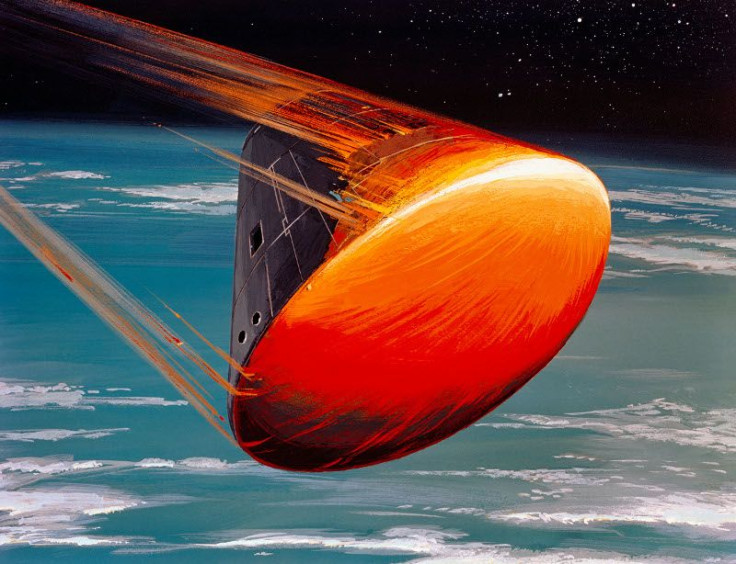Watch: ESA Melts Satellite To Study How It Ignites During Re-Entry

The European Space Agency (ESA) melted a satellite fragment to gain a better understanding of how spacecraft burn up during their re-entry to Earth. The point of the experiment was to develop satellites that would get completely destroyed during re-entry to minimize the risk of injuring people on the ground.
For the experiment, ESA used a facility that’s capable of replicating the effects of Earth’s atmosphere on objects from space. To achieve this, they turned to the plasma wind tunnel in the DLR German Aerospace Center in Cologne.
ESA scientists used a part of a magnetotorquer for the experiment, which is the densest part of an Earth-orbiting satellite. This part was selected because it’s one of the satellite fragments that are known to survive re-entry, along with optical instruments and pressure tanks.
A video of the experiment was posted by ESA on YouTube. In the clip, the piece of satellite can be seen glowing as it’s subjected to high heat. Eventually, the shape of the fragment changes as it melts.
According to Tiago Soares, an engineer for the ESA’s Clean Space project, he and the other scientists were able to determine the exact level of heat that led to the complete destruction of the magnetotorquer.
“We observed the behavior of the equipment at different heat flux set-ups for the plasma wind tunnel in order to derive more information about materials properties and demisability,” he said in a statement. “The magnetotorquer reached a complete demise at high heat flux level.”
For the ESA, understanding how satellites react to the re-entry process is very important in order to determine if fragments can still survive the Earth’s atmosphere.
Ideally, space hardware should burn up completely during re-entry to avoid injuring someone on the ground. However, this doesn’t always happen since certain fragments can still survive re-entry and reach the surface.
As a solution to this serious issue, the ESA is looking into developing low-orbiting satellites that are specifically designed to get completely destroyed as they enter Earth’s atmosphere. Through the “design for demise” concept, the agency is hoping to curb the risk of injuries and casualties caused by falling space debris.
© Copyright IBTimes 2024. All rights reserved.





















